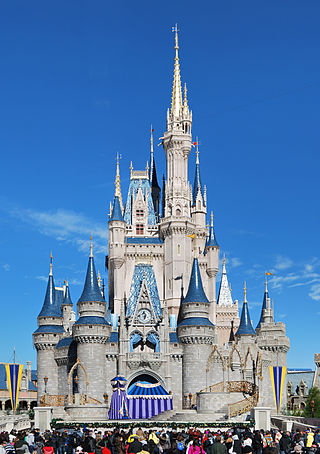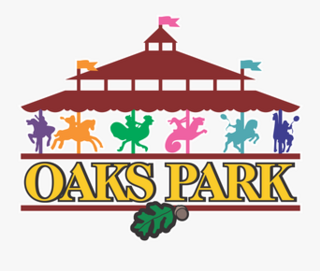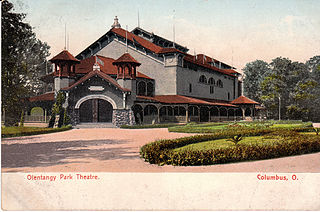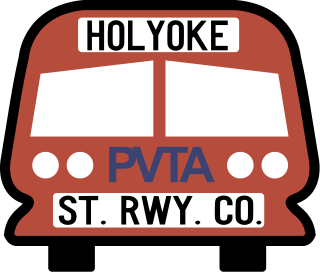
An amusement park is a park that features various attractions, such as rides and games, as well as other events for entertainment purposes. A theme park is a type of amusement park that bases its structures and attractions around a central theme, often featuring multiple areas with different themes. Unlike temporary and mobile funfairs and carnivals, amusement parks are stationary and built for long-lasting operation. They are more elaborate than city parks and playgrounds, usually providing attractions that cater to a variety of age groups. While amusement parks often contain themed areas, theme parks place a heavier focus with more intricately-designed themes that revolve around a particular subject or group of subjects.

In the United States, trolley parks, which started in the 19th century, were picnic and recreation areas along or at the ends of streetcar lines in most of the larger cities. These were precursors to amusement parks. Trolley parks were often created by the streetcar companies to give people a reason to use their services on weekends.

Oaks Park is a small amusement park located 3.5 miles (5.6 km) south of downtown Portland, Oregon, United States. The park opened in May 1905 and is one of the oldest continually operating amusement parks in the country.

Lake Compounce is an amusement park located in Bristol and Southington, Connecticut. Opened in 1846, it is the oldest continuously operating amusement park in the United States. It spans 332 acres (134 ha), which includes a beach and a water park called Crocodile Cove included in the price of admission. The park was acquired from Kennywood Entertainment Company by Palace Entertainment, the U.S. subsidiary of Parques Reunidos. In addition to the 14th oldest wooden roller coaster in the world, Wildcat, its newer wooden roller coaster, Boulder Dash, has won the Golden Ticket Award for the #1 Wooden Coaster in the World for five consecutive years.

Six Flags New England, formerly known as Gallup's Grove (1870–1886), Riverside Grove (1887–1911), Riverside Park (1912–1995) and Riverside: The Great Escape (1996–2000), is an amusement park located in Agawam, Massachusetts. Opening in the late 19th century, it is the oldest amusement park in the Six Flags chain, acquired by Premier Parks in 1996 and rebranded Six Flags New England in 2000. Superman The Ride is among the park's most notable rides, having appeared as a highly ranked roller coaster in the annual Golden Ticket Awards from Amusement Today since the ride opened in 2000.

Playland, often called Rye Playland and also known as Playland Amusement Park, is an amusement park located in Rye, New York, along the Long Island Sound. Built in 1928, the 280-acre (110 ha) park is owned by the Westchester County government. Beginning in 2018 the park has been operated under contract by Standard Amusements.
Lincoln Park was a park opened in 1894 by the Union Street Railway Company of New Bedford, Massachusetts, located in North Dartmouth, Massachusetts on the border of Westport, Massachusetts on U.S. Highway 6. Lincoln Park closed in 1987 and remained abandoned and vacant until the Comet roller coaster was torn down on July 11, 2012.

Idora Park (1899–1984) was an amusement park in Youngstown, Ohio, United States, also known as "Youngstown's Million Dollar Playground."

Midway State Park, located in Maple Springs, New York, was established in 1898 by the Jamestown & Lake Erie Railway as a picnic ground. Today, it is recognized as the fifteenth-oldest continually operating amusement park in the United States, and the fifth-oldest remaining trolley park of the thirteen still operating in the United States.

Olentangy Park was a trolley park, a type of amusement park, in Clintonville, Columbus, Ohio, operating from 1880 to 1937.

Camden Park is a twenty-six acre amusement park located near Huntington, West Virginia. Established in 1903 as a picnic spot by the Camden Interstate Railway Company, it is one of only thirteen trolley parks that remain open in the United States. Whereas most trolley parks were located at the end of trolley lines, Camden Park is unusual in that it was built where riders traveling between Huntington and nearby cities would stop to change lines. Not long after opening, the park soon gained a carousel and other roadside attractions. Camden Park is West Virginia's only amusement park. The park is home to more than thirty rides and attractions, including a full-size traditional wooden roller coaster, the Big Dipper, and several other vintage rides.

Dorney Park & Wildwater Kingdom is an American amusement and water park located in Dorneyville, Pennsylvania. Owned and operated by Cedar Fair, the park features 64 rides, including six roller coasters, other adult and children's rides, and a waterpark, Wildwater Kingdom, with 19 water rides.

Indianola Park was a trolley park that operated in Columbus, Ohio's University District from 1905 to 1937. The amusement park was created by Charles Miles and Frederick Ingersoll, and peaked in popularity in the 1910s, entertaining crowds of up to 10,000 with the numerous roller coasters and rides, with up to 5,000 in the massive pool alone. The park was also the home field for the Columbus Panhandles for half of a decade. In the 1920s, new owners bought and remodeled the park, and it did well until it closed at the end of the Great Depression.

Ramona Park was an amusement park located in the city of East Grand Rapids, Michigan between 1897 and 1955. The Park included a double track wooden roller coaster, a theater pavilion, a ridable miniature railway and boat livery.

The Holyoke Merry-Go-Round is a historic carousel in Holyoke, Massachusetts. Previously a ride in the city's now-defunct Mountain Park, it was purchased and restored by a volunteer fundraising campaign following the park's closure in 1987, and opened at a new building based its original pavilion in Holyoke Heritage State Park in 1993. The carousel is one of about 30 remaining carousels built by Philadelphia Toboggan Coasters. During its time as a stand-alone attraction it has grown to be a key part of the community.

Luna Park was one of several names for an amusement park that existed in Rexford, New York, near Schenectady, from 1901 to 1933. In addition to Luna Park, it was also known as Dolle's Park, Colonnade Park, Palisades Park, and (again) Rexford Park before the rides were dismantled in 1933. Constructed around the Grand View Hotel, the park was similar to Ingersoll's other Luna Parks in which it was a trolley park with roller coasters, picnic pavilions, carousels, a fun house, a roller rink, a concert shell, a dance hall, a midway, a Whip, and a shoot-the-chutes ride which presented itself at the park entrance adjacent to a station of the Van Vranken electric trolley line. Roughly seven decades before the Skycoaster rides that now dot various United States amusement parks, Luna/Rexford Park featured an aerial swing ride.
White City is the common name of dozens of amusement parks in the United States, the United Kingdom, and Australia. Inspired by the White City and Midway Plaisance sections of the World's Columbian Exhibition of 1893, the parks started gaining in popularity in the last few years of the 19th century. After the 1901 Pan-American Exposition inspired the first Luna Park in Coney Island, a frenzy in building amusement parks ensued in the first two decades of the 20th century.

Cascade Park is a nature park and former amusement park in New Castle, Pennsylvania. The park was originally known as Big Run Falls when the area on which the park sits was purchased by Col. Levi Brinton in 1892. Power companies at the turn of the twentieth century found they could make profits developing amusement parks, so in 1897, the New Castle Traction Company bought the property from Col. Brinton. When the company held a contest for the park's name, ten-year-old Regina Norris won ten dollars for submitting the name Cascade Park. The park opened on May 29, 1897. The park was accessible not only via local trolley service but also via the Pittsburgh, Harmony, Butler and New Castle Railway, which later became the Harmony Short Line Motor Transportation Company' bus company.
Rock Springs Park is a defunct amusement park once located in Chester, West Virginia, Hancock County. The park officially began operation in 1897, and closed in 1970 after the death of its final owner, Robert Hand. After four years of disuse, the land was bought by the state of West Virginia for the rerouting of U.S. Route 30 and the construction of the Jennings Randolph Bridge over the Ohio River.

The Holyoke Street Railway (HSR) was an interurban streetcar and bus system operating in Holyoke, Massachusetts as well as surrounding communities with connections in Amherst, Belchertown, Chicopee, Easthampton, Granby, Northampton, Pelham, South Hadley, Sunderland, Westfield, and West Springfield. Throughout its history the railway system shaped the cultural institutions of Mount Tom, being operator of the mountain's famous summit houses, one of which hosted President McKinley, the Mount Tom Railroad, and the trolley park at the opposite end of this funicular line, Mountain Park.






















